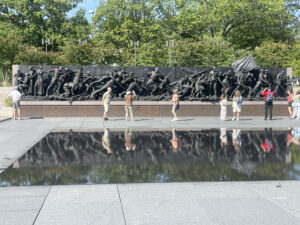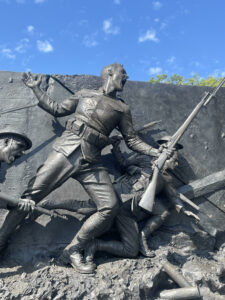Award-winning author | Writing coach | Speaker
Award-winning author
Writing coach | Speaker

 to the map carved on a marble slab. I found Belleau Wood and traced my finger over the gold lettering where my husband’s great uncle Wells Bradley Cumings took shrapnel in his gut while fighting with the U. S. Marines against the advancing German army. Dragged from the battleground to an infirmary tent, he lived an agonizing four days before death took him. He was eighteen years old, one month shy of his nineteenth birthday.
to the map carved on a marble slab. I found Belleau Wood and traced my finger over the gold lettering where my husband’s great uncle Wells Bradley Cumings took shrapnel in his gut while fighting with the U. S. Marines against the advancing German army. Dragged from the battleground to an infirmary tent, he lived an agonizing four days before death took him. He was eighteen years old, one month shy of his nineteenth birthday.  Their mother, Florence Cumings, was a first-class passenger on the Titanic. She was in lifeboat number four with Madeleine Astor as she watched the ship sink, carrying her husband with it. Bradley Cumings now rests at the bottom of the sea with the wreckage. I told her story in my novel Sheltering Angel. Now, in my working novel, I intend to tell the story of Wells and Jack through Florence’s aging eyes.
Their mother, Florence Cumings, was a first-class passenger on the Titanic. She was in lifeboat number four with Madeleine Astor as she watched the ship sink, carrying her husband with it. Bradley Cumings now rests at the bottom of the sea with the wreckage. I told her story in my novel Sheltering Angel. Now, in my working novel, I intend to tell the story of Wells and Jack through Florence’s aging eyes. the precise emotions of the war in France, and I commend you. I shed many tears as I stood before those proud and anguished figures, especially knowing how true you were to the humanity behind statistics and dry historical accounts of the fighting. Learning about the Great War and visiting your sculpture has given me a renewed respect for our nation’s highly trained and committed military.
the precise emotions of the war in France, and I commend you. I shed many tears as I stood before those proud and anguished figures, especially knowing how true you were to the humanity behind statistics and dry historical accounts of the fighting. Learning about the Great War and visiting your sculpture has given me a renewed respect for our nation’s highly trained and committed military.
what is the book you are writing called about Wells and John Cumings Jr? I attend their school and am writing a report on Wells.